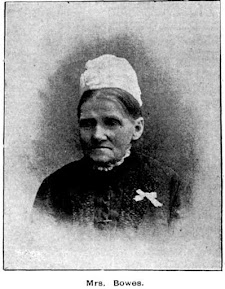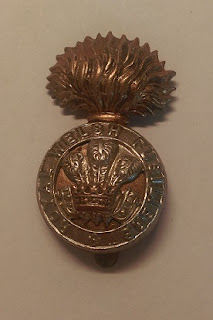A man of grit and integrity
I couldn't let this important day pass without rallying myself and at least writing the easiest of blogs for you. This blog (with some additions) was written and published back in 2016 in another area and this man, and his convictions still moves me today.
ARTHUR RAE
Arthur was born in Christchurch New Zealand in March 1860, one of nine children to the English born, Charles and Anne (nee Beldam). Charles was a painter and glazier who was also Secretary of the Railway Employee's
Association. He trained as a mechanic but later worked as a shearer and
labourer joining the Amalgamated Shearers' Union of Australasia upon its
formation in 1866.
Arthur crossed the Tasman in 1889 and helped to found
the first Labor Party in Sydney and went to prison during the Maritime Strike
in 1890. He was said to have brought the Riverina shearers out in support of
the strike but due to public demand he was released after one month. Arthur
continued to push the "bush" unions through the long bitter years of
the 1890's depression and in 1891 was one of the first Labor members returned
to the NSW Legislative Assembly.
He did however find time to head back to New
Zealand and marry Annie Fryer, his sweetheart, in 1892.
As time moved on, he championed women's welfare issues due to the influence of Rose Scott an early suffragette. In 1908 he favoured abolition of State Parliaments for smaller legislative bodies with the transfer of industrial powers to the Federal Government - (now there's a thought).
Arthur believed a new nation should not fight for
old empires as he felt that war profited a few at the cost of many. From the
outset of World War One he opposed Australia's participation whilst most of his
party rallied to the cause. For his efforts he was called a traitor and faced
ridicule and isolation.
However, as the war dragged on opinions changed
and at the 1918 Federal Labor Conference he argued against the departure of
further enforcements overseas. His motion was only narrowly defeated.
Arthur may have opposed the War, but he also had
three sons serve overseas.
Donald Mac Rae enlisted on the 28 December 1915
with his brother William and served in France. He sustained a gunshot wound to
the chest in 1917 and was sent to England for treatment. Donald returned to
France and was reported missing on 12 April 1918 during heavy fighting in the
Hangard Wood area during the German Spring Offensive where fresh German troops
from the Russian Front joined their colleagues on the Western Front. On 19
April 1918 he was reported a prisoner of war and in German hands.
After the war Donald was repatriated to England
and arrived on 11 December 1918. Four weeks later he went to Scotland to visit
friends and died on his last day of leave on 14 January 1919 of enteric fever
(a form of Typhoid). He was buried with full military honours including a
firing party, pall bearers and Pipe Band and lies in Dumfries Cemetery
Scotland.
William received a gunshot wound to his right arm
on 20 November 1916 and after a lengthy period to recover from that and a dose
of mumps, he returned to France in October 1917. William was killed in action
on 8 August 1918 in Amiens in the first battle of the "Final Push".
He is buried in Villers-Bretonneux Military Cemetery France.
William's twin Charles, a gunner in the Field
Artillery Brigade, embarked from Sydney to head to France in November 1917 and
was the only brother and son to return to Australia having made it through the
War relatively unscathed.
Arthur's wife Annie never recovered from the loss
of her sons and died in 1929.
In 1920 Rae was excluded from holding further
office in the AWU when he refused to sign a pledge of loyalty to those in
control of the union. He turned to journalism and was a member of the Coal
Miners Federation and the Australian Journalists Association. He wrote for the
Labor Daily and supported John Lang in his factional struggles in 1926-27.
Arthur kept fighting the arbitration system that
he deemed to have done moral harm to the workers of NSW and returning to the
Senate in 1928-35 he joined the breakaway Lang Labor Group.
Arthur Rae died on 25 November 1943 and is buried
with his wife in the Old Anglican Area under a simple
headstone. He was survived by Charles, another son and two daughters.
Arthur and Annie Rae's headstone - a little forgotten but not after today - author's personal collection
The newspaper "The Worker" in 1914 had
saluted him as "one of the Napolean's" of the cause.
A man of great moral integrity.
Rest in Peace Perfect Peace. We salute you.
Arthur Rae opposed war yet watched three sons enroll to fight overseas, only one came home - how devasted he would have been that his fight for peace and not wanting Australians to fight for other countries was not heard by his sons.
For today's blog I have referenced The Australian Dictionary of Biography article by Frank Farrell, Ancestry.com, The AIF Project, World War One - a history in 100 stories by Bruce Scates, Rebecca Wheatley and Laura James, NAA enlistment papers for Donald, William and Charles Rae and my previous piece about Arthur Rae.
If you have any comments regarding this blog, please add them below or at the Group Facebook page found under
rookwoodcemeterydiscoveries
or contact me via
lorainepunch@gmail.com
Until next time






Comments
Post a Comment